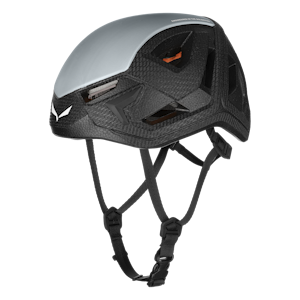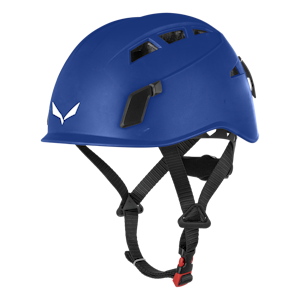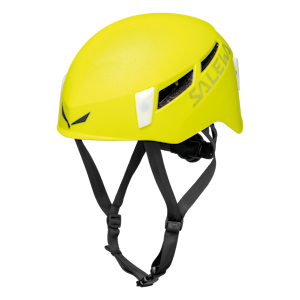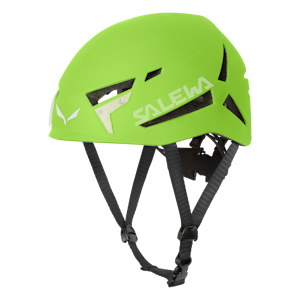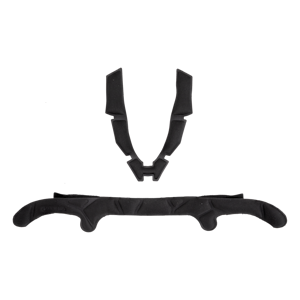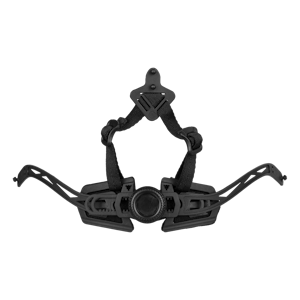Climbing Helmets
(6 Products)Climbing helmets from Salewa offer all the protection and comfort needed by safety conscious climbers and are available in a wide range of sizes. It's very important to choose a rock climbing helmet that's a good, snug fit, and also offers easy adjustment while on rock faces. Another vital factor to take into consideration is the heat that can be generated while climbing rock or ice, so choosing helmets with adjustable ventilation can be the ideal solution. If you enjoy climbing and skiing, combination rock/ski helmet may be the lightweight and stylish choice that's right for you? Combination helmets are ideal for ski mountaineering as they provide all essential safety protections, alongside a stylish design and streamlined appeal that won't look amiss on the most popular ski slopes.
Are climbing helmets necessary?
Climbing accidents can happen at any time or in any place, even in familiar terrain. Climbing helmets are generally not worn indoors, but climbing outdoors is a whole different matter. Climbing has a range of common accident scenarios, so it makes sense to wear a helmet and play safe.
What types of climbing helmets are there?
There are three main types of climbing shell helmets:
- Hardshell helmets
Made of a hard, impact-resistant plastic outer shell with a foam or webbing inner suspension cradle so the plastic sits away from your head. They are very durable and long-lasting. - Foam softshell helmets
Softshell helmets have a thin polycarbonate outer shell and in-mold, polystyrene or expanded foam core. They are particular lightweight and very comfortable to wear. - Hybrid helmets
Hybrid helmets combine the benefits of softshell and hardshell helmets to offer a lightness and stability. They have a tough plastic outer shell with a cushioning inner foam lining.
Why do we wear helmets outside when climbing?
A climbing helmet is the first thing you should buy when you start climbing outside. They protect your head from things falling from above you (stones, pieces of equipment, etc..) and can also protect your head from hitting the rock if you fall.
What kind of impacts are climbing helmets designed for?
All climbing and mountaineering helmets provide a certain level of protection for the top of the head from falling objects guaranteed by the requirements of the EN 12492 and UIAA 106 certifications.
How do you clean a climbing helmet?
Keep it simple. Gently wash your helmet with mild soap and water. We also recommend washing your helmet pads by hand in cold water with mild soap. Avoid using chemical cleaning agents as they may damage your helmet.
How long do climbing helmets last?
The lifespan of your helmet is dependent on a number of factors, including frequency of use, weather effects, UV exposure and storage conditions. Retire your helmet if it suffers any severe damage, such as a big impact or significant rockfall. Even if it’s never been damaged, retire your helmet after a maximum of ten 10 years from the production date. Inspect your helmet and the buckle each time before you use it.
Can I use a ski helmet for climbing?
Generally speaking, ski helmets are not designed for mountain climbing. However, some helmets have a double certification for skiing and climbing.
Do you need a helmet for bouldering?
Wearing a helmet is a question of relative danger. For standard boulder problems, it’s more important to have a good boulder mat and a friend to spot you rather than to wear a helmet. However, for highball problems, wearing a helmet can be a very good idea.
How should a climbing helmet fit?
The most important factor is to choose a helmet that fits your head snugly – it shouldn’t move when you tip your head. A sloppy fit will reduce a helmet’s ability to protect your head. You might also want to be able to wear a hat under your helmet on colder days, so make sure it has some adjustability.


